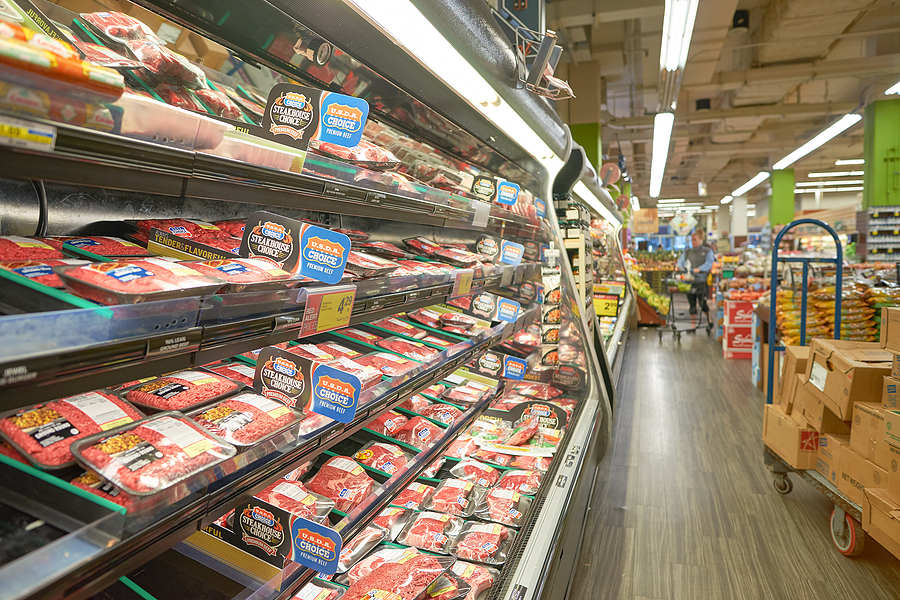By Karl Deily, Sealed Air SVP and Chief Commercial Officer
A pandemic changes everything. It changes how we view our surroundings. It changes what we trust. It changes our sense of security.
As the COVID-19 crisis continues and supply chains are still compromised, more focus is being put on the safety of everything from doorknobs to doughnuts. While new food safety regulations are implemented and consumer demands continue to shift and increase, products need to satisfy a greater number of food quality and security requirements. Here are a few ways science and technology can help tackle food industry risks heightened by the coronavirus.
Leverage science and data to increase food traceability and transparency globally
Traceability allows food products to be traced through the supply chain. Since the beginning of the pandemic, the reputational repercussions of food safety failures have only become more apparent. As consumers understand more about the food they consume and are growing more and more cautious of the number of trips they are making to the grocery store, they demand more transparency from retailers and food suppliers.
Science and data allow us to understand causes of breaches in food security, identify food safety issues before they become threats, and help stem the spread of food-borne illness. Recent data gathered from technology and applications rooted in predictive and remote monitoring can track production and distribution, improve food traceability, and enhance food security.
In some cases, smart packaging even allows consumers to better track their food and help the food industry establish better supply chain visibility.
Invest in high-performing food packaging
Packaging protects food as it is transported, stored, and displayed in the store.
Research conducted by food scientists and microbiologists, coupled with advances in packaging technology, can help tackle food safety head on. When combined with good manufacturing practices, these technologies provide extended shelf-life with minimal food safety issues and help put consumers’ minds at ease.
The recent health crisis has emphasized how food safety risks are also different by region or country. For instance, in China, some consumers purchase unpackaged fresh proteins such as chicken in open food markets. This increases risk of cross-contamination. A lack of packaging also makes it more difficult to manage traceability.
Using the right type of packaging can dramatically decrease food safety risks while increasing shelf-life and minimizing food waste in China and around the globe. One example? Vacuum packaging with materials that are specially engineered for poultry.
Invest in the right technology to deepen learning and advancement around food quality and safety
COVID-19 has highlighted how companies need to be adaptable. As the food supply chain grows globally, the food industry must be prepared to meet the demands of regulators worldwide while also delivering on changing consumer preferences, such as the surge in buying frozen packaged goods.
Every step of the food supply chain is accountable for what they supply or handle. The food industry is primed for technology that delivers insights in real time for better connectivity across the supply chain in areas like cold chain management.
With the right data, the industry can also get ahead in compliance-based learning requirements to achieve important certifications. Many of these solutions are also cloud-based, allowing global companies to introduce consistent training faster.
During this time, it is vital that big industry players consider investing in new approaches to research and innovation. To promote food safety and get ahead, scientists at IBM Research and Mars joined forces under efforts such as the Sequencing the Food Supply Chain Consortium. This collaborative food safety platform, led by scientists from both companies, takes advantage of advances in genomics to further our understanding of what makes food safe.
Consider automation for food safety and efficiency
Automated solutions can help companies work more efficiently and overcome labor constraints and shortages — especially during a global pandemic. Further, automation can also provide critical food safety benefits to prevent the spread of the virus. Fewer workers on the floor can reduce the risk of human contamination, and touchless systems make it unnecessary for workers to handle goods.
And as manufacturing continues to shift toward more complex automated processes such as material detection systems that can detect contaminants in fresh meat and poultry, the possibilities are endless.
There is no doubt COVID-19 has disrupted every aspect of life and caused us to question many of our existing ways of working. However, by applying what we already know about food science, investing in the right technology, and collaborating across the industry, we can ensure a safe, efficient global food supply chain for all.

